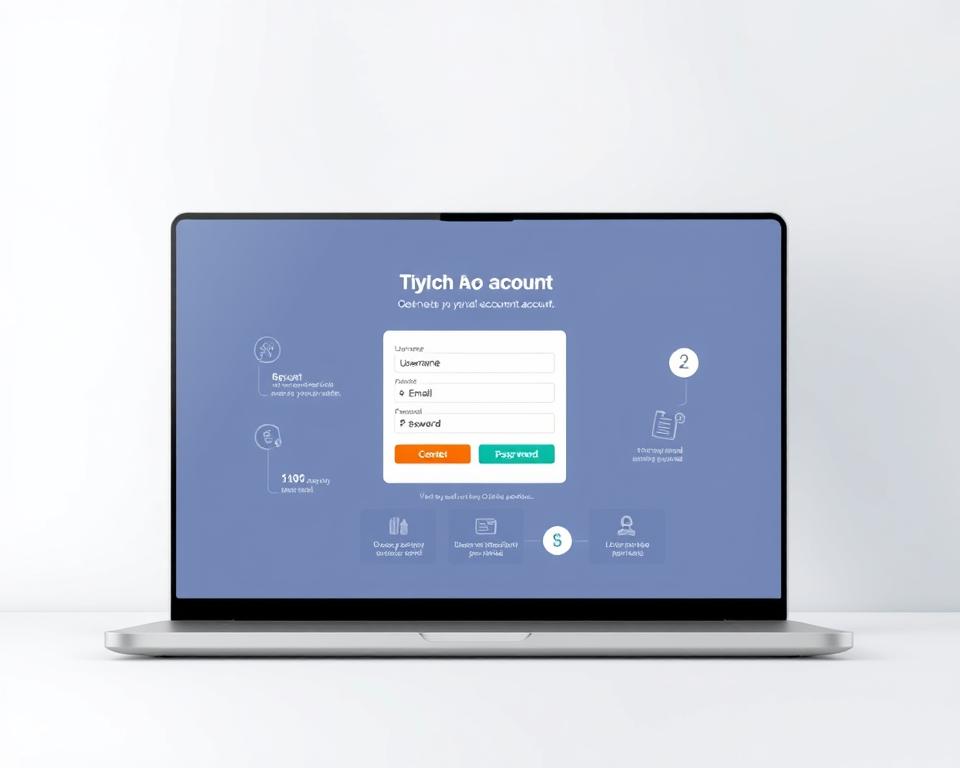Specialist Cosmetic Surgery SEO Solutions for Every Practice
Have you ever questioned how it is that some aesthetic surgeons regularly attract additional patients yet others struggle? In many cases, the reason comes down to targeted marketing—particularly SEO services for cosmetic surgery. In this web-focused landscape, SEO has become indispensable for growing practices. First-class SEO from a well-known company boosts a practice’s web exposure, attracting prospective clients and streamlining broader marketing initiatives.
Cutting-edge SEO for cosmetic surgery targets key pillars. These encompass on-page optimization, in-depth keyword research, calculated link building, and robust content marketing plans. Working together, these elements boost online presence and drive more relevant users to surgeons’ websites using websites SEO for plastic surgeons. This surge amplifies patient acquisition rates markedly.
Top Highlights
- SEO is vital for improving web exposure for cosmetic surgeons.
- Leveraging professional SEO services yields increased client intake.
- A well-rounded SEO approach includes on-page optimization, keyword research, and content marketing.
- High-quality link building is essential in securing trust in the crowded cosmetic surgery niche.
- Specialized SEO services remain custom-fit to address the distinct needs of cosmetic surgery practices.
Understanding the Significance of SEO for Plastic Surgeons
SEO stands pivotal for plastic surgeons aiming to boost their online visibility among over 11,400 U.S. professionals. The goal remains to stand apart in a crowded field. Many patients now use online searches to research cosmetic procedures. Data reveals, digital channels act as the primary source for more than two-thirds of potential patients. An well-executed SEO strategy for cosmetic surgery drives better search engine rankings, translating into increased inquiries from new patients.
Using SEO services for plastic surgeons makes certain they stay at the forefront of search engine algorithm changes. Being adaptable remains vital for keeping a strong online presence. Effective SEO practices go beyond merely boost visibility; they build confidence with potential patients. A prominent search engine placement is often viewed as dependability. Consequently, integrating SEO into a marketing plan for plastic surgery is mandatory, and not merely an option.
Benefits of Choosing Expert SEO Services for Your Practice
A plastic surgeon SEO expert delivers critical value to cosmetic surgery practices. With extensive expertise, they develop strategies that overcome the industry’s particular challenges. Their emphasis on SEO for plastic surgery guarantees websites perform for targeted keywords and align with search engine updates.
Outsourcing SEO tasks frees plastic surgeons to focus on patient care while reducing marketing headaches. Such experts use data-driven strategies to improve online presence. This produces better search engine rankings and, accordingly, more patients—all and keeping in check costs.
Getting SEO advice from seasoned pros remains key for a cosmetic surgery practice’s development and survival in a demanding market. Teams like SEO Marketing Nerds customize their strategies for concrete results. Through expert SEO support, practices gain the necessary tools and knowledge for web-based achievement.

Ways SEO Helps Your Cosmetic Surgery Practice
Executing a solid SEO strategy offers many advantages for cosmetic surgery practices. It significantly amplifies brand visibility, making it easy for potential patients to readily discover vital information. A practice that secures top spots in search results sees more website traffic, which results in increased conversion rates—converting casual visitors into potential patients.
An finely tuned website improves the user experience by rendering navigation simple and helping visitors access information about services quickly. This emphasis on the user fosters trust. Patients appreciate accessibility and clarity, which fosters a positive relationship.
SEO establishes authority for cosmetic surgery practices, giving potential patients confidence in the practice’s quality and reliability. Partnering with an SEO expert for plastic surgeons provides customized strategies that enhance these benefits and lead to significant SEO results for cosmetic surgery—establishing a solid online reputation.
| Benefit | Description |
|---|---|
| Greater Visibility | Enhances brand presence online, allowing potential patients to find the practice. |
| Greater Visitor Numbers | Drives up the number of visitors to the website, leading to more inquiries and bookings. |
| Better User Experience | Provides easier navigation, allowing visitors to access key information about procedures with ease. |
| Boosted Authority | Top rankings create trust among potential patients, making the practice as a credible choice. |
Key Components of an Efficient SEO Strategy
An impactful SEO strategy for plastic surgeons includes several essential parts that enhance a website’s visibility and attract potential patients. Among these are keyword research, on-page optimization, and emphasizing local SEO.
Keyword discovery is central to any SEO effort. It enables cosmetic surgery SEO professionals to uncover popular terms related to specific services, making sure the content matches potential patients’ search needs.
On-page optimization is just as important. It includes refining page titles, meta descriptions, and headers with targeted keywords. These changes assist search engines in comprehending the content better, boosting rankings.
For cosmetic surgery clinics, local SEO stands out. Many patients seek out services close to home. Using Google My Business boosts local visibility, attracting more geographically relevant patients.
By combining these elements with support of SEO management firms, a plastic surgeon’s website can witness substantial online progress, leading to increased web traffic.
| SEO Component | Description |
|---|---|
| Keyword Research | Discovering relevant search terms that potential patients use. |
| On-Page Optimization | Adjusting website elements for better search engine ranking. |
| Local SEO | Enhancing visibility in local search results through platforms like Google My Business. |
Utilizing Keyword Research in Cosmetic Surgery SEO
Keyword research is crucial for any SEO plan, notably in cosmetic surgery. It’s essential for practices to understand what potential patients are searching for. By knowing the terms used in searches, cosmetic surgery SEO consulting is more precise. This knowledge helps in choosing keywords that align with both the services offered and what patients seek.
Looking into keyword trends and their search volumes is important. When practices uncover high-ranking keywords like “breast augmentation near me” or “best facelift procedures,” they can fine-tune their websites. Using these SEO strategies for cosmetic surgery practices helps in drawing those searching for relevant information. It boosts search engine visibility, resulting in more site visitors.
The impact of a proficient SEO plastic surgeon is significant. They employ keyword insights to create content that matchess the needs of potential patients. By tackling common inquiries and concerns, this content not only fosters trust but also puts the practice as a preferred choice.
On-Page Optimization Techniques for Plastic Surgeon Websites
On-page optimization is essential for a plastic surgeon’s website to perform well in search engine results. Tuning title tags and meta descriptions increases visibility significantly. Proper header tags ensure content well-structured and clear, assisting users and search engines comprehend the site’s main topics.
Optimizing image alt texts is another important task for cosmetic surgery website SEO. It boosts site accessibility and lets search engines understand what each image represents. Producing quality content that answers potential patients’ queries is key. This content should be both informative and relevant to captivate visitors and promote longer visits.
Employing a mobile-friendly design markedly improves the user experience for those on smartphones and tablets. Such a design can lead to fewer people leaving the site prematurely and more patient inquiries. Collaborating with an SEO agency specializing in plastic surgery fine-tune these strategies, strengthening the site’s total online presence.
By using these on-page strategies, under the guidance of an seasoned SEO specialist for plastic surgeons, a website can secure strong positions in search engine rankings. This visibility motivates more patients to explore what the practice offers.
Building Trust through High-Quality Link Building
Link building is critical for plastic surgeons to build online authority and trust. High-quality backlinks from credible sites show search engines that a practice is trustworthy. This boosts search rankings and brings in referral traffic.
A variety of strategies are key to a holistic approach. Guest posting enables showcasing expertise and gaining valuable links. Teaming up with medical bloggers widens audience reach and boost brand visibility. Additionally, partnerships with health organizations assist in solidify a surgeon’s community standing.
Effective SEO consulting for plastic surgeons utilizes tailored strategies that prioritize quality link building. A proficient cosmetic surgery SEO company pinpoints optimal backlink opportunities, ensuring each link contributes to credibility, not detracts from it.
Strengthening Local SEO for Cosmetic Surgery Practices
For cosmetic surgery practices, polishing local search is essential. It allows plastic surgeons draw local patients seeking their services. Establishing a robust local presence allows these practices to stand out in a dense field.
Key elements of local SEO involve setting up Google My Business profiles, ensuring patients find essential details like contact information quickly. Positive patient reviews build credibility and attract new patients. It’s important to maintain consistent NAP (Name, Address, Phone Number) info across all online platforms.
Growing local engagement through localized content and social media is also beneficial. Partnering with an SEO agency that is specialized in cosmetic surgery can offer tailored advice and strategies. Committing to local SEO techniques increases practices’ search visibility, making it simpler for potential patients in the area to find their services.
Connecting to Patients through Content Marketing
Content marketing is crucial for plastic surgeons looking to engage future patients. By sharing valuable articles and blog posts, they showcase their expertise and cultivate confidence in the community. This strategy directly responds to the common queries and concerns that resonate with those contemplating cosmetic surgery.
Video marketing for plastic surgeons is also essential, attracting those who favor visual content. Through videos of procedures, testimonials, and practice insights, they forge an emotional bond with viewers. This blend of content improves cosmetic surgery SEO results, engaging the audience and spurring social media sharing.
Consistently publishing high-quality content sets a practice as a trusted voice in cosmetic surgery. When potential patients come across informative pieces and captivating videos, they’re likely to book consultations. This leads to growth based on informed choices and trust. Centering on content marketing targets the audience’s interests, increasing search engine visibility.
Proven Video Marketing Strategies for Your Practice
Video marketing for plastic surgeons greatly improves online visibility. Compelling visuals display procedures, present success stories, and provide educational content. This approach builds trust and credibility with potential clients.
Optimizing video content is fundamental for cosmetic surgery SEO. Using relevant keywords in video titles, descriptions, and tags boosts discoverability on platforms like YouTube and social media. This helps potential patients to easily find the videos they need.
Videos on websites retain visitors intrigued, showing off the practice’s unique capabilities. Short social media clips can spark shares and discussions, widening marketing reach. Blending these tactics is key for SEO strategies centered on a strong online presence.
- Engaging procedure explanations
- Patient testimonial videos
- Post-operative care instructions
- Behind-the-scenes content
Deploying these strategies increases patient comprehension and fosters a genuine connection. A personal touch in videos forms rapport, prompting people to request consultations.
Evaluating the Effectiveness of Your SEO Efforts
In the field of plastic surgery, SEO success is gauged by monitoring important metrics. These include organic traffic, bounce rates, and conversion rates, which give insights into user interaction. Using Google Analytics can be pivotal, offering data on how visitors engage with your website.
Findings obtained through these metrics let practices to adjust their strategies effectively. By regularly monitoring keyword rankings, areas requiring enhancement are pinpointed. This ensures an ongoing refinement in SEO efforts. The rivalry in cosmetic surgery requires benchmarking against peers to stay ahead.
A straightforward table neatly presents key performance indicators:
| Metric | Description | Importance |
|---|---|---|
| Organic Traffic | Number of visitors coming via search engines | Indicates the reach and effectiveness of the SEO strategy |
| Bounce Rate | Percentage of visitors leaving after viewing only one page | Helps gauge content relevance and user experience |
| Conversion Rate | Percentage of visitors completing desired actions (like booking a consultation) | Shows the effectiveness of the website in converting visitors into patients |
| Keyword Rankings | Positions of targeted keywords in search engines | Pinpoints the effectiveness of keyword strategies |
In cosmetic surgery SEO consulting, the attention goes past metrics to the market competition. By assessing your practice’s performance against competitors, strengths and weaknesses emerge. This insight allows practices to pivot and succeed. Ongoing assessment and strategic modifications are vital for sustainable SEO success in the plastic surgery realm.
Cosmetic Surgery SEO Services: Expectations
Enlisting cosmetic surgery SEO services delivers many advantages to medical practices. These include a detailed website examination to pinpoint current metrics and areas demanding improvement. A veteran SEO expert for cosmetic surgery will conduct extensive keyword research—targeting finding the most impactful terms to attract potential patients.
The services feature on-page optimization, concentrating on key website components. Meta descriptions and headers are optimized to boost search engine visibility. The heart of these services is to continuously fine-tune strategies in response to performance insights and evolving market trends.
Integral to these services are consistent performance reports. They give plastic surgeons detailed insights into the effectiveness of their SEO strategies. Such transparency creates confidence and enables ongoing optimization of their marketing approaches.
Collaborating with a expert SEO agency simplifies digital marketing for plastic surgeons. In the end, choosing the right SEO expert guarantees your marketing strategies match your business goals through comprehensive and customized strategies.
Wrapping It Up
For any cosmetic surgery practice seeking to shine online, engaging skilled plastic surgeon SEO professionals is crucial. They combine keyword research, on-page optimization, and local SEO into a comprehensive strategy—enabling practices outshine their competitors in today’s digital world.
Collaborating with reputable SEO management firms enables practices to customize their website precisely, showcasing their unique services and know-how. Such customization fosters industry authority, opening the door to lasting success.
Adopting these SEO strategies doesn’t just improve online visibility; it also strengthens patient interaction. By investing in high-quality plastic surgeon SEO services, cosmetic surgeons place themselves as prominent figures in their specialty.








